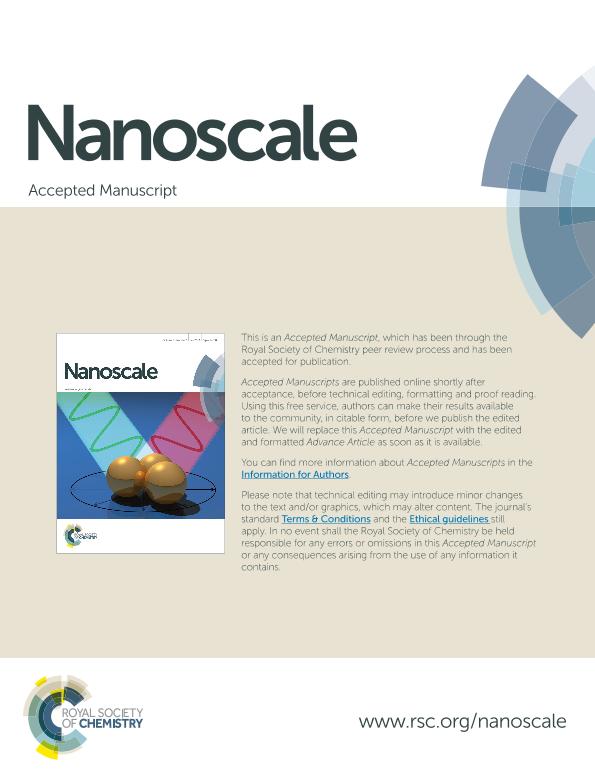Mostrar el registro sencillo del ítem
dc.contributor.author
Arnal, Laura

dc.contributor.author
Longo, G.
dc.contributor.author
Stupar, P.
dc.contributor.author
Castez, Marcos Federico

dc.contributor.author
Cattelan, Natalia

dc.contributor.author
Salvarezza, Roberto Carlos

dc.contributor.author
Yantorno, Osvaldo Miguel

dc.contributor.author
Kasas, S.
dc.contributor.author
Vela, Maria Elena

dc.date.available
2018-06-18T14:04:39Z
dc.date.issued
2015-11
dc.identifier.citation
Arnal, Laura; Longo, G.; Stupar, P.; Castez, Marcos Federico; Cattelan, Natalia; et al.; Localization of adhesins on the surface of a pathogenic bacterial envelope through atomic force microscopy; Royal Society of Chemistry; Nanoscale; 7; 41; 11-2015; 17563-17572
dc.identifier.issn
2040-3372
dc.identifier.uri
http://hdl.handle.net/11336/48937
dc.description.abstract
Bacterial adhesion is the first and a significant step in establishing infection. This adhesion normally occurs in the presence of flow of fluids. Therefore, bacterial adhesins must be able to provide high strength interactions with their target surface in order to maintain the adhered bacteria under hydromechanical stressing conditions. In the case of B. pertussis, a Gram-negative bacterium responsible for pertussis, a highly contagious human respiratory tract infection, an important protein participating in the adhesion process is a 220 kDa adhesin named filamentous haemagglutinin (FHA), an outer membrane and also secreted protein that contains recognition domains to adhere to ciliated respiratory epithelial cells and macrophages. In this work, we obtained information on the cell-surface localization and distribution of the B. pertussis adhesin FHA using an antibody-functionalized AFM tip. Through the analysis of specific molecular recognition events we built a map of the spatial distribution of the adhesin which revealed a non-homogeneous pattern. Moreover, our experiments showed a force induced reorganization of the adhesin on the surface of the cells, which could explain a reinforced adhesive response under external forces. This single-molecule information contributes to the understanding of basic molecular mechanisms used by bacterial pathogens to cause infectious disease and to gain insights into the structural features by which adhesins can act as force sensors under mechanical shear conditions.
dc.format
application/pdf
dc.language.iso
eng
dc.publisher
Royal Society of Chemistry

dc.rights
info:eu-repo/semantics/openAccess
dc.rights.uri
https://creativecommons.org/licenses/by-nc-sa/2.5/ar/
dc.subject
Atomic Force Spectroscopy
dc.subject
Adhesins
dc.subject
Bordetella Pertussis
dc.subject
Biofilm
dc.subject.classification
Nano-materiales

dc.subject.classification
Nanotecnología

dc.subject.classification
INGENIERÍAS Y TECNOLOGÍAS

dc.title
Localization of adhesins on the surface of a pathogenic bacterial envelope through atomic force microscopy
dc.type
info:eu-repo/semantics/article
dc.type
info:ar-repo/semantics/artículo
dc.type
info:eu-repo/semantics/publishedVersion
dc.date.updated
2018-06-15T18:33:03Z
dc.journal.volume
7
dc.journal.number
41
dc.journal.pagination
17563-17572
dc.journal.pais
Reino Unido

dc.journal.ciudad
Cambridge
dc.description.fil
Fil: Arnal, Laura. Consejo Nacional de Investigaciones Científicas y Técnicas. Centro Científico Tecnológico Conicet - La Plata. Centro de Investigación y Desarrollo en Fermentaciones Industriales. Universidad Nacional de la Plata. Facultad de Ciencias Exactas. Centro de Investigación y Desarrollo en Fermentaciones Industriales; Argentina
dc.description.fil
Fil: Longo, G.. Institute of Physics of Biological Systems; Suiza
dc.description.fil
Fil: Stupar, P.. Institute of Physics of Biological Systems; Suiza
dc.description.fil
Fil: Castez, Marcos Federico. Consejo Nacional de Investigaciones Científicas y Técnicas. Centro Científico Tecnológico Conicet - La Plata. Instituto de Investigaciones Fisicoquímicas Teóricas y Aplicadas. Universidad Nacional de La Plata. Facultad de Ciencias Exactas. Instituto de Investigaciones Fisicoquímicas Teóricas y Aplicadas; Argentina
dc.description.fil
Fil: Cattelan, Natalia. Consejo Nacional de Investigaciones Científicas y Técnicas. Centro Científico Tecnológico Conicet - La Plata. Centro de Investigación y Desarrollo en Fermentaciones Industriales. Universidad Nacional de la Plata. Facultad de Ciencias Exactas. Centro de Investigación y Desarrollo en Fermentaciones Industriales; Argentina
dc.description.fil
Fil: Salvarezza, Roberto Carlos. Consejo Nacional de Investigaciones Científicas y Técnicas. Centro Científico Tecnológico Conicet - La Plata. Instituto de Investigaciones Fisicoquímicas Teóricas y Aplicadas. Universidad Nacional de La Plata. Facultad de Ciencias Exactas. Instituto de Investigaciones Fisicoquímicas Teóricas y Aplicadas; Argentina
dc.description.fil
Fil: Yantorno, Osvaldo Miguel. Consejo Nacional de Investigaciones Científicas y Técnicas. Centro Científico Tecnológico Conicet - La Plata. Centro de Investigación y Desarrollo en Fermentaciones Industriales. Universidad Nacional de la Plata. Facultad de Ciencias Exactas. Centro de Investigación y Desarrollo en Fermentaciones Industriales; Argentina
dc.description.fil
Fil: Kasas, S.. Institute of Physics of Biological Systems; Suiza
dc.description.fil
Fil: Vela, Maria Elena. Consejo Nacional de Investigaciones Científicas y Técnicas. Centro Científico Tecnológico Conicet - La Plata. Instituto de Investigaciones Fisicoquímicas Teóricas y Aplicadas. Universidad Nacional de La Plata. Facultad de Ciencias Exactas. Instituto de Investigaciones Fisicoquímicas Teóricas y Aplicadas; Argentina
dc.journal.title
Nanoscale
dc.relation.alternativeid
info:eu-repo/semantics/altIdentifier/doi/http://dx.doi.org/10.1039/c5nr04644k
dc.relation.alternativeid
info:eu-repo/semantics/altIdentifier/url/http://pubs.rsc.org/en/Content/ArticleLanding/2015/NR/C5NR04644K
Archivos asociados
